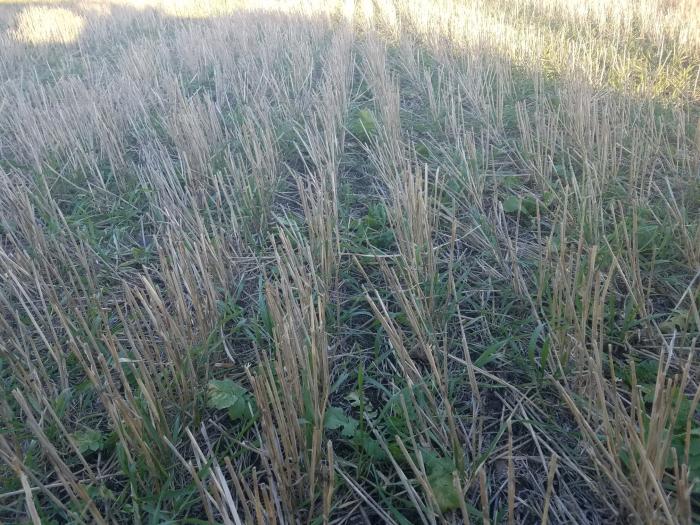A Conservation Journey: From Skeptical to Intrigued in Grand Forks County
When Sam Landman came home from college talking about soil health, no-till and cover crops, his father wasn’t too enthusiastic.
Luann Dart writes from Elgin, N.D.
“I was still a little skeptical,” Robert Landman admits.

But Robert remembered he started farming with his dad. They were still summer fallowing about 25% of their ground every year. His dad was willing to at least try some of the new things. Robert took the same approach with Sam.
“Little by little, we eliminated the chisel plowing and the deep tillage altogether,” Robert says. They now no-till about 10% of their ground and only do one pass tillage in the spring on the rest. They raise corn, soybeans, wheat and pinto beans.
The Landmans appreciate the reduced labor requirements associated with less tillage. They also have seen an increase in crop yields and an improvement in their soil health.
“We found, especially on soybeans, that they’re well-adapted to no-till,” Robert says.
On tilled ground, soybeans are usually limited by a lack of moisture in August.
“We found we were really getting better yields with the less tillage we did, because we saved some of that moisture for that August time period. That’s one of the easiest things to do no-till on,” he says.
The Landman are now trying cover crops.
“I’m intrigued by the cover crops,” Robert says. “That whole idea of keeping something living in the soil after harvest does make sense.”
The Landmans have some special challenges because two crops in their rotation – soybeans and pinto beans – don’t leave much residue behind after harvest. Planting cover crops are a way to protect the soil over winter following soybeans and pinto beans.
Two years ago, after harvesting wheat, they planted radishes in 30-inch rows. The next season, they planted pinto beans on top of the radish rows. This year, oats were planted following the pinto bean harvest.
“It provides some ground cover on the black soil (after pinto beans) over the winter,” Sam says.
The radishes also help break up compaction from wheel tracks and provide an easier root path for the beans.
“Radishes are good at scavenging nutrients that have leached down deep and storing them in their tap roots over the winter. When it decays, everything’s available right there for next year’s crop. Nutrient recycling, you could call it,” Sam says.
The radishes also leave a visible dark strip to warm the ground in the spring.
Robert encourages others to incorporate no-till, particularly in soybeans.
“Start with soybeans in some wheat stubble you didn’t till. That’s about the safest, risk-free thing you can do, and it works. Then you can kind of go from there,” he says. “We’re pleasantly surprised by the results.”
The Conservation Stewardship Program administered by the Natural Resources Conservation Service (NRCS) has helped them try some of the new conservation practices.
“It takes some of the risk and the cost away from us. There’s enough different practices available so you don’t have to pick the ones that are too risky or too big of a change,” Robert says.
The more they use no-till, minimum till and cover crops, the more the benefits become clearer.
“I’m not going to be the last generation of our family to farm that land. I want it to be there when my kids are taking over, too,” Sam says.
Kevin Gietzen, NRCS District Conservationist Grand Forks County, has been helping the Landman’s since with their conservation projects since 2014.
“Sam’s wife, Whitney, told me the other day that all Sam wants to talk about is cover crops and soil health,” Gietzen said. “As a conservationist who sincerely cares about our resources and the future of farming, I couldn’t have been happier to hear her say that.”

